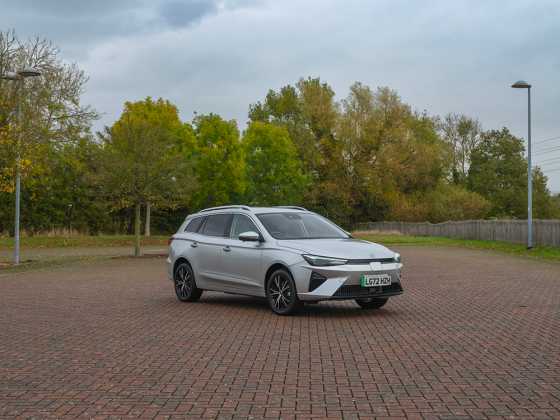Optimised for value
A new model might be just around the corner, but GreenFleet finds that the current Kia Optima 2 1.7 CRDi offers style, value and lots of kit.
 The Kia Optima started life in 2000, but in Europe and selected US markets, drivers may have known it as the Magenta. A tie-in based on the then contemporary Hyundai Sonata, the Optima offered a traditional four-door saloon body style with generic looks. Relaunched in 2005, the second‑generation model was a Kia in its own right and used its own bespoke global platform with styling penned by ex-Audi designer Peter Schreyer. The third-generation car, as tested here, arrived in 2011.
The Kia Optima started life in 2000, but in Europe and selected US markets, drivers may have known it as the Magenta. A tie-in based on the then contemporary Hyundai Sonata, the Optima offered a traditional four-door saloon body style with generic looks. Relaunched in 2005, the second‑generation model was a Kia in its own right and used its own bespoke global platform with styling penned by ex-Audi designer Peter Schreyer. The third-generation car, as tested here, arrived in 2011.
‘Green car’ technology leader
The first Optima to use the name globally, Kia’s mid-size Mondeo challenger uses a version of the Hyundai i40’s platform. A hybrid version is also available in selected markets, and with the launch of the fourth-generation car in 2016, Kia has confirmed that this model will survive and will form part of a strategy to become a leader in ‘green car’ technology. As the hybrid model isn’t sold in the UK, on test here is the 134bhp 1.7-litre CRDi diesel, the only engine available.
A little grumbly on the move, the diesel unit has 325Nm (239lb ft) of torque from 2,000-2,500rpm so feels plenty quick enough to hustle Kia’s 1,559kg saloon to 62mph from rest in 9.9 seconds. The Optima can be quite vocal when accelerating, but once cruising speed is reached, the engine quietens down.
Accomplished cruiser
Make no mistake, though, the Optima is an accomplished and comfortable cruiser. The steering is a little light for a car of this size, but the Optima is easy to drive and blends a decent ride quality and keen-ish responses well. Kia states that its motor-driven power steering system delivers assistance only when it’s needed which reduces the load on the system itself as well as saving fuel.
Kia quotes a combined cycle fuel economy figure of 57.6mpg and we achieved a high of 56.3. Overall, the GreenFleet real‑world average figure was 49.1, which is not too far short of the South Korean car manufacturer’s claims.
The Optima 2 1.7 CRDi EcoDynamics has CO2 emissions of 128g/km. While not as low as some of its more common competition, a simple Intelligent Stop & Go (ISG) stop/start system contributes to better economy.
Other eco equipment includes a trip computer with distance to empty, as well as both average and instant fuel consumption read-outs.
Spacious cabin
The spacious cabin is nicely-trimmed and feels more premium than some Far Eastern rivals. There’s plenty of rear legroom, as well as a truly colossal boot. Practical touches feature, too: handy release levers which fold down the rear seats sit just inside the boot opening edge.
Kia has loaded the Optima with lots of standard equipment including dual‑projection headlights, leather trim, an eight-way power-adjustable drivers’ seat, heated front seats, ‘woodgrain’ interior trim panels, USB/AUX/Bluetooth connectivity, reversing camera, parking sensors, automatic headlight control, auto-dimming mirror, and stylish 18-inch alloy wheels. There’s also a truly great sounding 550W, 11-channel, 12-speaker Infinity stereo system which includes a 200mm sub-woofer mounted in the rear parcel shelf. The seven-inch touchscreen infotainment graphics are a little basic, but the system itself is simple to navigate.
As with the interior, the exterior gives off a quality impression. Designed in both Germany and the US, the Optima is a quietly handsome car, and from some angles (most noticeably the rear), there are shades of 2003-2010 BMW 5 Series. Upfront, the headlights include LED daytime running lights, there’s Kia’s now-compulsory ‘Tiger Nose’ grille while the LED fog lights are the same ‘cube’ style as those on the company’s Procee’d GT sports hatchback. A body-coloured ‘shark’ fin radio aerial adds to the premium touches.
Again, playing its value card, the Optima’s safety kit is high. Highlights include ABS, ESC, Hill-Start Assist, a plethora of airbags as well as active front head restraints. Kia equips the Optima with a seven-year, 100,000-mile warranty or a three-year, unlimited mileage guarantee. Service intervals are stated as 20,000 miles or annually.
 Hybrid and estate
Hybrid and estate
The reasoning for the single-engine option in the current Optima is due to what Kia says are the demand of the predominantly business market in which it operates. However, with the ever-changing market in the UK, petrol engines such as Kia’s 2.0-litre unit may well make a return. An estate version has also been mooted, to both increase sales and to answer the 45 per cent demand that the D-segment demands in this country.
Kia’s marketing tagline is ‘The Power to Surprise’ and not for the first time, the company has done just that. While the Optima may not be as obvious as its Avensis, Insignia, Mondeo and Passat rivals, there is lots to like about Kia’s mid-sized challenger. It is good value, has lots of equipment and is stylish as well as being a decent drive. Never a big seller in the UK, with the arrival of a new more efficient and improved model, there’s reason for that to change. We think it should – the Kia Optima deserves its place among the mid-sized business elite.









